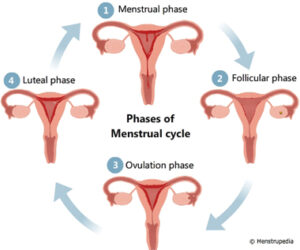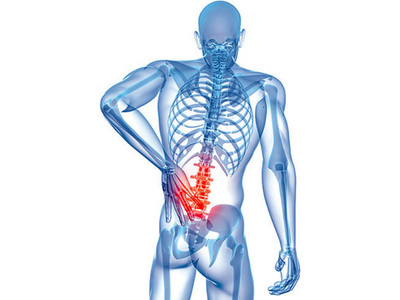
For long I’ve discussed with my clients about benefits of regular exercises on the menstrual cycle and working out based on your menstrual cycle. I have personally experienced the benefits of reduced cramps and back pain during the menstrual phase and now I sync my workouts according to my menstrual cycle.
If you are a women who loves to work out just like me, but does not feel like doing the same routine each week, then here is some information to guide you through making a workout schedule that suits your cycle. How? That’s by understanding your menstrual cycle or the effect of hormones that change levels throughout the cycle.
Lets try and understand the basics of a menstrual cycle first.Now the normal menstrual cycle lasts for 28 days and it has 4 phases. Namely;
1. Menstrual phase
2. Follicular phase
3. Ovulation phase
4. Luteal phase
Menstrual Phase:-
During the menstrual phase, your uterus is shedding the lining it has built up throughout the month. This will typically be days 1 to 7 of your cycle. At the very beginning of your period, your progesterone and oestrogen levels will be at their lowest, which along with the loss of blood may cause you to feel depleted of energy. As your period goes on, these hormone levels will gradually increase.
If you experience feeling fatigue during the early days of your period, you may not necessarily feel like doing much intense exercise. However, if you feel physically able, there is no medical reason to not exercise during the menstrual phase of your period.
How should you exercise during the menstrual phase?
Depends on your flow levels actually. If you are someone who experiences low energy and heavy flow then you should choose a restorative form of exercises but if it all you are a woman with a lighter flow and normal energy levels then you can take up heavier work outs.
Here are some suggestions for exercise you could do during the menstrual phase.
1. Relaxing yoga poses or stretching
2. Walking or light cardio
3. Lighter strength training
You can continue to do strength training during the menstrual phase of your period, but at this stage it might be wise to reduce the weights of your workout. Due to increased fatigue, the menstrual phase is not the time to push yourself too hard — so try sticking to where you’re currently at or even taking it a little easier than usual.
Exercising during the follicular phase
This phase starts as soon as your periods are over and is a good phase to progress your levels of work outs or take up challenging workouts. Infact I advise women that if you decide to take a marathon or a tournament your body will work and recover very well during this phase. Why?
Simply because ,after menstruation is over your oestrogen levels get a big boost as your body prepares to release an — which is usually associated with increased energy.
How should you exercise during the follicular phase?
During the follicular phase is a good time to make use of your increased energy to challenge yourself, as well as trying new things in your exercise routine.
High-intensity interval training
Whether you already practice HIIT as part of your regular workout routine or it’s entirely new for you, HIIT workouts are a great way to exercise with increased energy levels. HIIT is quick, fun, and has the physical benefits of increasing your VO2max, as well as continuing to burn energy up to 48-72 hours after the workout is done.
Boxing
Another great way to let out your energy and try something new? Use your extra energy to build up overall full-body strength and endurance with boxing.
Strength training
During your follicular phase when energy is high, you may like to try pushing yourself a little more with strength training. This could mean challenging yourself with heavier weights or trying push-ups on your toes instead of on your knees.
Marathon training
This is a good time to increase your speed or distance as you are preparing for a marathons
Exercising during the ovulation phase
The ovulation phase of your cycle is just after the follicular phase, typically for 3 to 5 days between the follicular and luteal phase — days 12 to 19 of your cycle. During this phase, you’ll still have high levels of oestrogen from the increase during the follicular phase, while also having increased levels of luteinising hormone (LH) and follicle-stimulating hormone. LH is what triggers the body to start ovulating.
Ovulation, like the follicular phase, will most likely be a high-energy time. If that’s the case, you can capitalise on this by performing high-energy workouts.
How should you exercise during the ovulation phase?
For the most part, you can continue to perform high-intensity exercises that you were doing during the follicular phase. You might also like to progress to if you have been a brisk walker for long in this phase or just plain increase your running distance or just switch up the style of cardio you do — if you’ve been doing running, try or instead?
For those in to HIIT type of workouts, this phase has a similar energy so there is absolutely no energy deficiency and you can continue with your work outs.
Exercising during the luteal phase
The last phase of your menstrual cycle — before menstruation — is the luteal phase. This typically lasts 14 days, between days 20-28. During the first part of the luteal phase, you’ll likely still have energy from ovulation, which will begin to decline the closer you get to menstruation.
The Luteal phase is the hardest on women. This is where massive declines of energy occur, irritability increases, cravings are through the roof and you can be left feeling flat both mentally and physically.
In terms of nutrition there is an impaired carbohydrate tolerance during this phase, so try to avoid giving in to those cravings when possible.
This is also the phase of the cycle where you are more likely to experience bloating, so don’t be alarmed if the scales change this week or if you look and feel bloated.
Sleep is often interrupted during this phase as well which can make symptoms worse so make sure that you have your nighttime routine and sleep routine down pat.
The luteal phase is characterized by a peak in progesterone levels — which can make some people feel drowsy. One 2003 review of the research by the of Sydney in Australia, published in Sports Medicine, suggested that for women undertaking prolonged endurance training, the mid-luteal cycle phase is associated with increased cardiovascular strain and decreased time to exhaustion in hot conditions, most likely due to an increase in body temperature at this part of the cycle.
This is a consideration for women undertaking endurance training or planning races, particularly in hot, humid conditions.
An increase in core body temperature during the luteal phase resulting in impaired running economy (performance) was also observed by a small 2020 study, published in Journal of Sports Medicine and Physical Fitness by St Mary’s in the UK.
This does not mean that you shouldn’t run or do exercise during the luteal phase, but that it may be more difficult than usual, or during other phases of your cycle.
How should you exercise during the luteal phase?
During the luteal phase, you can absolutely continue with your workouts as usual, but you may experience some more difficulty with completing them with the same intensity. Here are some exercises you might like to try during the luteal phase of your menstrual cycle.
Yoga or Pilates
During the luteal phase when you are about to get your period and energy levels may be lower, this is a great time to practice yoga or Pilates — both of which gently increase overall strength while also releasing muscle tension. If you’re new to yoga, you can start with this guide to yoga for beginners.
Low-intensity cardio
I personally start switching to more cardio and restorative form of exercises by the end of this phase , like from almost 2 weeks before my end of the cycle, but you should always go by your body signals.
In the same 2019 study, aerobic exercise was also found to be beneficial for relieving PMS symptoms when performed three times a week for 12 weeks.
During the luteal phase, you may like to try a low-intensity cardio program: this could be going for a long walk, a few laps of in the or pool, or going for a bike ride.
Take-Home Message:-
• Whilst the menstrual cycle has the ability to make fat loss a little harder for women, it doesn’t mean it’s impossible.
• Using this information as a guide will help you make the most out of your training and nutrition during your cycle while reducing the confusion and stress that often comes with it.
• Your cycle isn’t something that needs to be feared; if you can understand it, you can work with it.
• Remember that you are always in control; so focus on those factors such as getting enough sleep, eating the right foods, reducing stress and putting maximum effort in to the training sessions that are outside of the luteal phase.
• Do what you can to be successful, stay consistent as much as you can, and the results will come. Progress over perfection.





